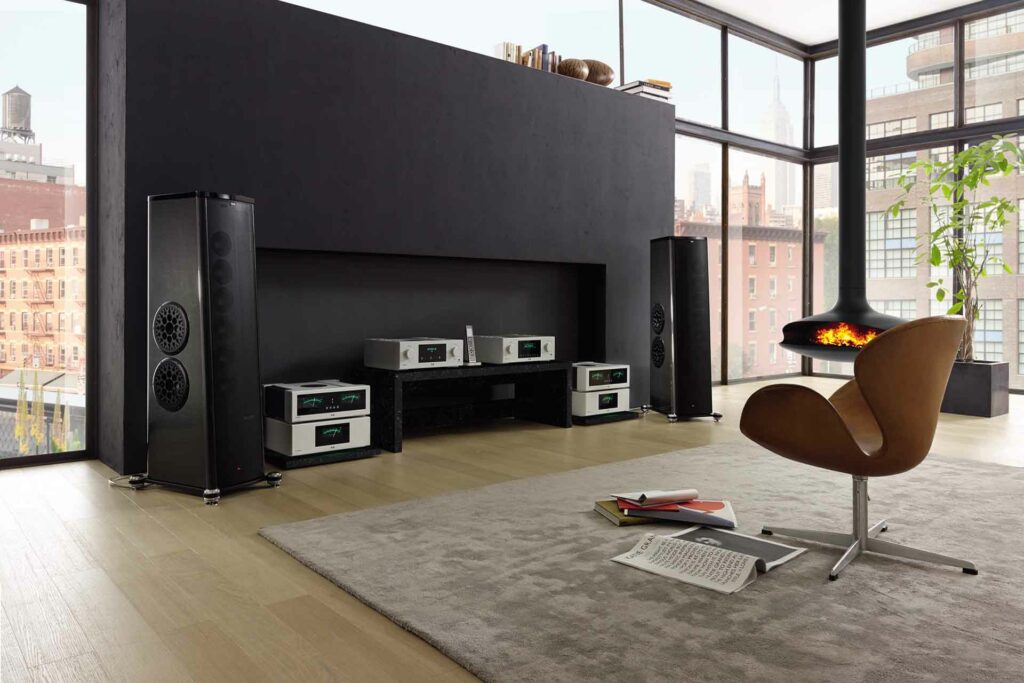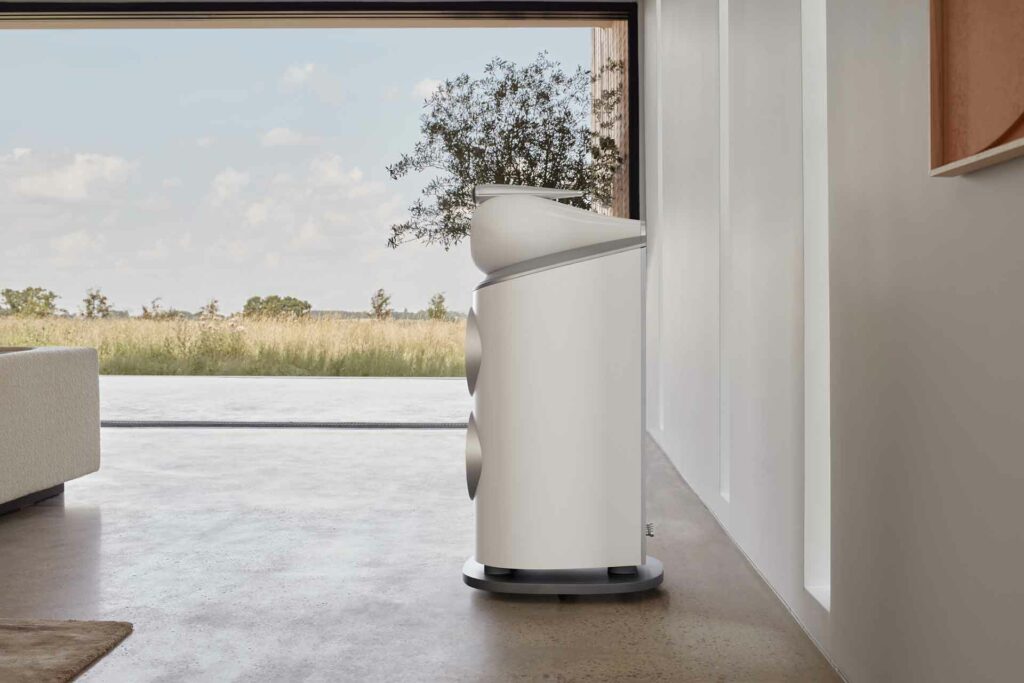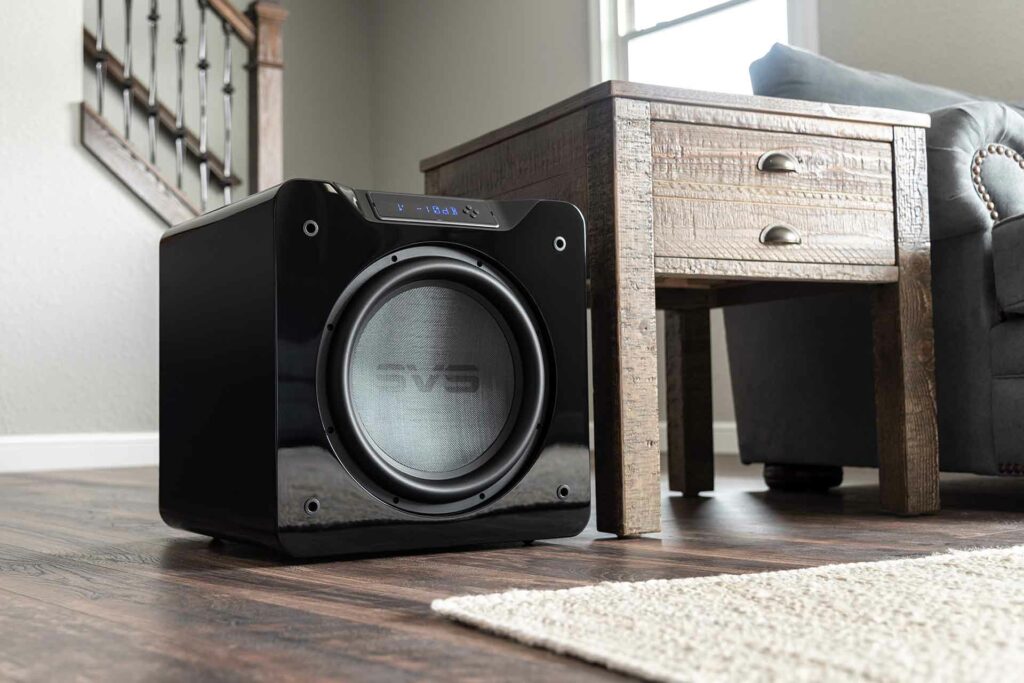Audiophiles tend to fall into a number of different camps when it comes to the philosophy of system design. The first one if the Linn Camp, which suggests that your system is only as good as your main source component. That’s solid logic, but then there are audiophiles who take this concept a little too far sometimes, meaning that they spend too much money on their audiophile turntable or Compact Disc player, but have small, non-room-filling speakers and/or lack the low frequency power that comes from installing even a modest subwoofer.
The next camp is the one I tend to fall into more often than not: the JBL or West Coast Camp, where the fastest way to get the most sound is to invest more in your main audiophile loudspeakers and figure out the rest later. This business model served me very well in my days in high-end audio sales, as clients understood why they wanted a pair of Wilson WATT Puppy speakers more than why they needed a Mark Levinson power amp and Mark Levinson preamp. After the Wilson speakers are installed, if you were show up with a nice bottle of wine and a thick stack of Mark Levinson gear, the chances that it was ever going back to the shop were slim-to-none (…with Slim on vacation).
The fact of the matter is: both models of audiophile system design are quite flawed and not all that sustainable.

Build a Balanced Audiophile System Should Be Every Enthusiast’s Goal
Nobody should ever want an audiophile system that is out of sorts. The systems that I used to build in the early 1990s around Wilson WATT Puppy speakers that were powered by a $1,000 Acurus integrated amp and a Rotel CD player were fine. But when you grew them into a Mark Levinson system with better cables and a better overall setup, the systems really came to life. Putting a $10,000 DAC into a system with a $1,000 pair of highly capable bookshelf speakers is equally insane. I understand if somehow you fell into the $10,000 DAC at a garage sale or somebody lent it to you, but to make your system at this overall price range that top heavy in terms of front-end investment is silly, too.
There can be peer pressure in the audiophile hobby at times, and that often needs to be ignored. Each step in the audiophile process should be carefully considered and enthusiastically enjoyed. As a rule, invest in gear when you feel like it and have the budget for it. The time I spent with all of the wonderful gear that I have been blessed to own has been a true gift. Review products as well as audiophile components that I bought over the years all had their upsides and downsides. My borrowed MartinLogan Summit ESL speakers (thank you Brian Kahn) were best for nearfield listening (without much head movement) where the finish on my various Wilson Audio speakers reminded me of the exotic car ownership. Audi Pearl White this and Aston Martin Dark Titanium that was a fun way to use custom paint from the world of sports cars into my audiophile system. How much fun was it to own all of that great gear? It was a blast. And I am not done, as I have a new system being installed as I type.

Have You Ever Tried an Audiophile System Reset?
Audiophile writer Michael Zisserson is the person who really started the discussion that led to this article. He does something today that I used to do when I had more volume of audiophile components, years ago. From time to time, Michael swaps out his impressive reference system ($30,000 Bricasti monoblock amps, recently updated $10,000 Bricasti DAC, a modern Bricasti solid-state preamp, etc.) with his secondary audiophile system. His alternate system is no slouch, by the way. He’s got a well-regarded Grace Audio m900 DAC for $650 from the world of pro audio. He’s got a kick-ass stack of electronics, including but not limited to a Parasound P 6 preamp/DAC as well as a Parasound A 21+ power amp. He powers up anything from Sonus faber Lumina V speakers for $3,000 to Tekton Pendragons to speakers costing much, much more.
What the system reset does is to gently knock you out of a potential listening rut. But not everybody can justify having backup audiophile components like Michael does. Alternatively, you can go to a local store and bring home some new speakers to experiment with a different sound in your room. You could borrow a stack of electronics that might not be as lofty as your reference system but you can still enjoy the benefits of both what you own and what you get to experiment with. I can’t easily rent cars that are like what I drive in Los Angeles but when I go to Hertz (more to SIXT, the higher-end German rental car company these days) it gives me a chance to experience cars like Audi and BMWs, which aren’t in my normal wheelhouse. And I love it as it is something fun, new, and different for my driving. You can add the same type of out-of-the-box experiences for audio without too much fuss.
One place where I hear of a lot of equipment sharing (sounds naughty, doesn’t it) is in the world of audiophile societies. Paul Wilson runs the Carolina Audiophile Society and has gotten some support from retailer Mike Twomey at Big Kid Toys in Greensboro, North Carolina. If you are part of their group and show that you are cool, people (and stores) are much more willing to bring over or lend-out audiophile gear for you to experience. Do you always have to go down-market? Not at all. In fact, that is rare. But being able to access new and different gear is like being an audiophile reviewer but without the editor hounding you about deadlines.

It Is OK To Have an Audiophile Type or a Personal Signature Sound?
Over the years, I have met all sorts of people into audio. One of the fallacies is that there is one perfect or right system. That’s pure bullshit. The hobby has a lot to do with the sound and performance of a system as determined by its owner. And those sounds are as diverse as can be.
I know an actor from a classic late-1980s sitcom who is also an audiophile. He lives nearby and I know him through golf. His system, mostly procured from a local Santa Monica audiophile dealer, is made up of Vandersteen speakers, a whole pile of high-end Audio Research tube electronics, and his main source is vinyl. The system is full-bodied and a bit soft on the higher frequencies. He gets a mellow yet resolute sound that is respectful of the way the classic music he loves sounded when it was released. He’s looking for a smooth suspension in his daily driver versus taking speed bumps in a dropped Lamborghini.
An AV industry executive I know with a lot of experience in the loudspeaker business has a number of homes, thus quite a few audiophile systems. His listening preferences are strongly aimed at live and acoustic jazz from the 1950s into the mid-1960s. He tends to invest in low-Watt Class-A electronics like Pass Labs. His vinyl collection is housed exclusively at his main home. The other two use Compact Discs (no streaming – and trust me, I’ve talked to him about it but some old habits die hard) often with cutting-edge digital electronics including up-sampling DSD DACs and other goodies. What is most interesting is the speakers that this speaker expert likes to own outside of the brands that he’s owned or worked for – which tend to be planar or electrostatic in design. The newest $1,000 Magenpan LRS+ speakers (read the review) are among his recent favorites. Quad ESL-63s are a very open sounding, time-tested, true audiophile classic. On the very high end, $40,000 Sound Lab electrostatic speakersfrom Utah are ready to play back some soothing jazz from the classic era. The premium in these systems is a very open sound in the high frequencies so the ambience of the studio or live venue is brought to life in his many different music rooms.

When it comes to me, I like a little bit more slam or immediacy to my signature sound. I prefer floorstanding speakers and own a number of very well-made options, including Revel F328Be speakers and my newest arrival: Bowers & Wilkins 802 D4s (both in white). Like my friend above, I like the slight warmth of Class-A amplification, but when things get loud, I am perfectly OK with my power converting over to Class-B, which my Pass Labs XA25 amp (read the review) does nicely. I rarely go without a subwoofer in a two-channel system, as I don’t want to miss a bit of the low-frequency action in my favorite movies. My reference SVS SB-4000 subwoofer is an Earth-shaker and very much beloved. Today’s subs, led by SVS, have easy access to well-programmed apps that can make setting up a sub successfully a 10-minute, fully DIY endeavor. I don’t do vinyl yet, but I have space in my system set asidefor the right turntable when I am ready to pull the trigger. I am having RCA interconnects run through the walls to this space, as well as an electrical outlet installed. My demands for a turntable tend to be on the architectural side, as I like them to be a focal point of a system in terms of industrial design. I will spend a good bit of money on a turntable someday, but I won’t go to crazy land, as you will see at some of the audiophile shows. My goal is to see if I enjoy listening to music later at night, when decompressing from a highly digital job, will bring me more joy somehow. Not sure, but I will be looking at the Pro-Jects and Oracles at the upcoming AXPONA show.
I’m not sure my aforementioned audiophile friends would love my current system the way that I do, as they are looking for either a softer or a more open sound, where I am going for that compress-the-room, tightly controlled, palpable in-the-studio sound. Am I correct in my tastes? No. Nor are they. Thesound of your system is purely personal. There simply is no right or perfect audiophile system.
What’s most important is that you should enjoy each and every step along the audiophile journey. The fun is in the process of hearing your music sound better and better as your system improves and you explore more and more new artists and recordings.




Jerry,
I love this article and thank you for the shout-out. I just want to remind all our friends that your “audio sorbet” does not have to be an entire second system. The idea of system synergy and audio sorbet first started for me in the late 90s, and I find it to be a very enhancing parts of what makes me love my music even more. It does not have to be expensive, and can be as simple as a good, used pair of speakers that you have room to store. Speakers that provide a little different character, but are still enjoyable in the context of how you like your music. I mirror Jerry’s theme here, that the journey is all part of the fun, and it a marathon, NOT a sprint. I have been at it for nearly 30 years and still feel like a novice at times!
You deserve all of the credit for this story. It was your idea, I just ran with it. A great idea and hopefully will help people get a better understanding of how to build their systems over time without fear, insecurity etc…
Avoiding fear was a big one for me. Fear of making a mistake. My financial world requires getting it right the first time. Or hopefully the first time, lol